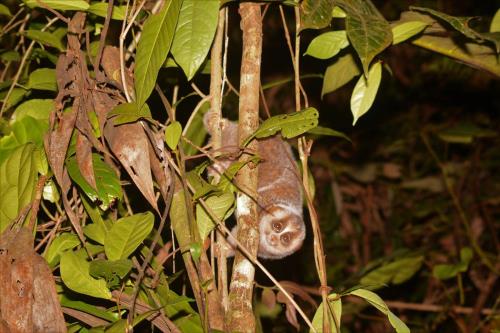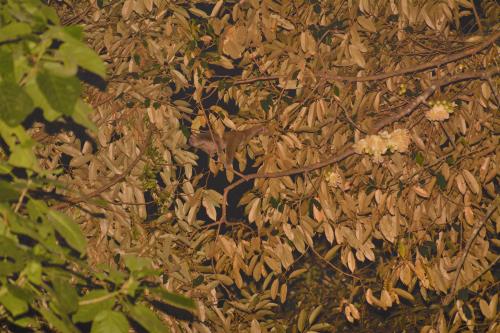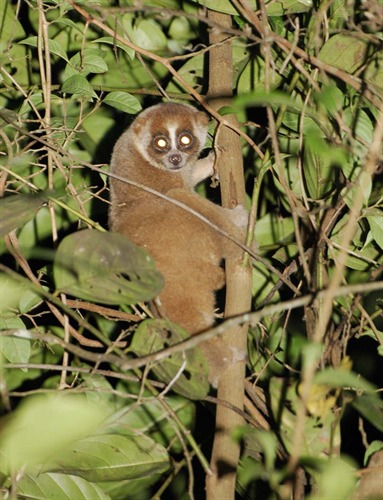
Back
Nycticebus coucang (Boddaert, 1785)
| Family Name: | Lorisidae |
| Taxonomic Group: | Vertebrates (Mammal) |
| Common Name: | Greater Slow Loris, Sunda Slow Loris, Kongkang, kukang |
The critically endangered Sunda Slow Loris is the only venomous primate in Singapore. It produces a yellow secretion from glands on the insides of its elbow, which combines with saliva to form venom. During the day, it sleeps on branches or in tree holes by tucking its head into its belly and rolling into a ball. Globally, the population size of Sunda Slow Loris is decreasing due to habitat loss and illegal pet trade.
Name
Description
| Size | Body mass 600-685 g, body length 27-38 cm |
|---|---|
| Description | Head round with very short muzzle and large, forward-facing eyes. Body is pale greyish to reddish brown with a vestigial tail. Usually has dark coloured ring around each eye. Fur is soft and thick. The dark stripe down its back differentiates it from the other slow loris species. |
Ecology, Habitat & Location
| Ecological Notes | Inhabits forest. Nocturnal, arboreal and usually solitary. Its movements may appear deliberate, but not necessarily slow, always maintain at least one limb while it climbs upright or hanging below branches of tree. Its diet consists of floral nectar, sap, gum, fruits and small insects. It is polyestrous, usually giving birth to a single offspring. |
|---|---|
| Habitats | Arboreal, Forest |
| Distribution | In Singapore, recorded from the Bukit Timah Nature Reserve, Central Catchment Nature Reserve and Pulau Tekong. Distributed in the Malay Peninsula, Southern Thailand, Riau Islands and Sumatra. |
| Nature Reserves | Bukit Timah Nature Reserve, Central Catchment Nature Reserve |
Conservation
| Trends & Threats | Habitat loss, poaching and wildlife trade. |
|---|---|
| Scientific Interest & Potential Value | One of the few mammals whose bite is known to be venomous. Due to its attractive appearance, individuals are often caught and sold as pets. |
| Conservation Notes | Protection of forest habitats, and enforcement of strict anti-poaching laws. |
Status
| Species Status | Native |
|---|---|
| Conservation Status | Rare |
| Singapore Red Data Book Status | Critically Endangered (CR) [2008] |
| IUCN Red List | Endangered |
| CITES | Appendix I |
Photos
References
| References | Baker, N. & Lim, K. 2008. Wild animals of Singapore. Singapore: Draco Publishing and Distribution Pte Ltd. 180pp Davison, G.W.H., Ng, P.K.L. & Ho, H.C (Eds.). 2008. The Singapore Red Data Book (2nd Edition). Singapore: Nature Society (Singapore). 285pp Ng, P.K.L. & Wee, Y.C. (Eds.). 1994. The Singapore Red Data Book (1st Edition). Singapore: Nature Society (Singapore). 343pp |
|---|


